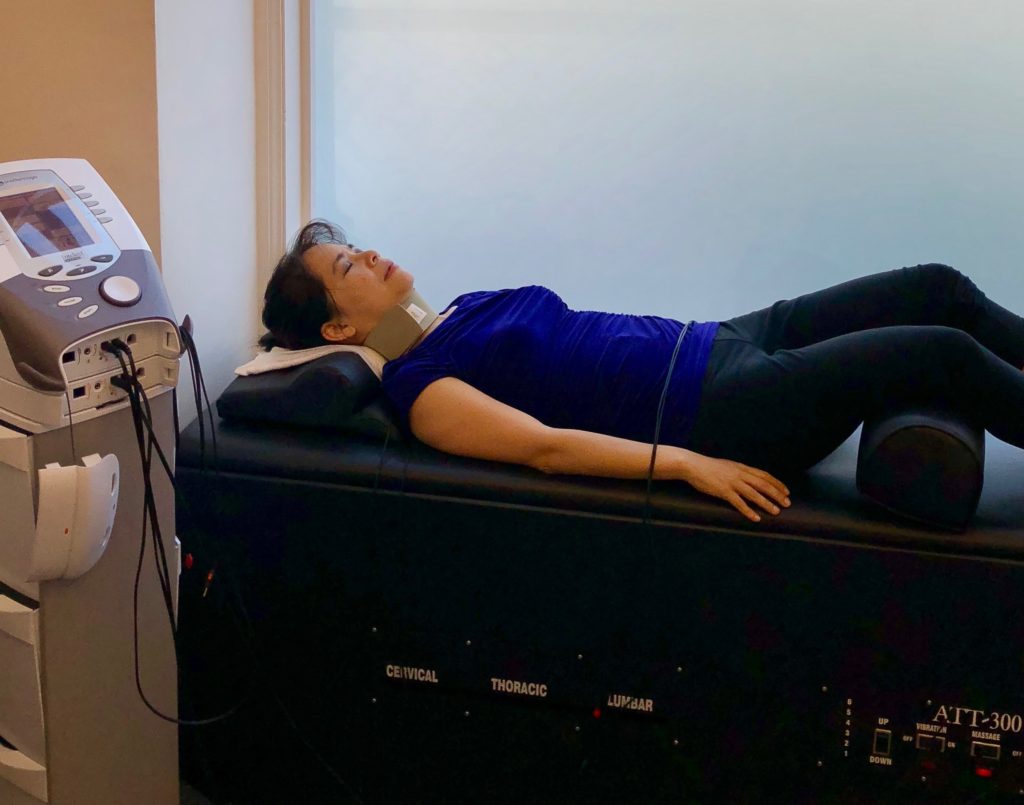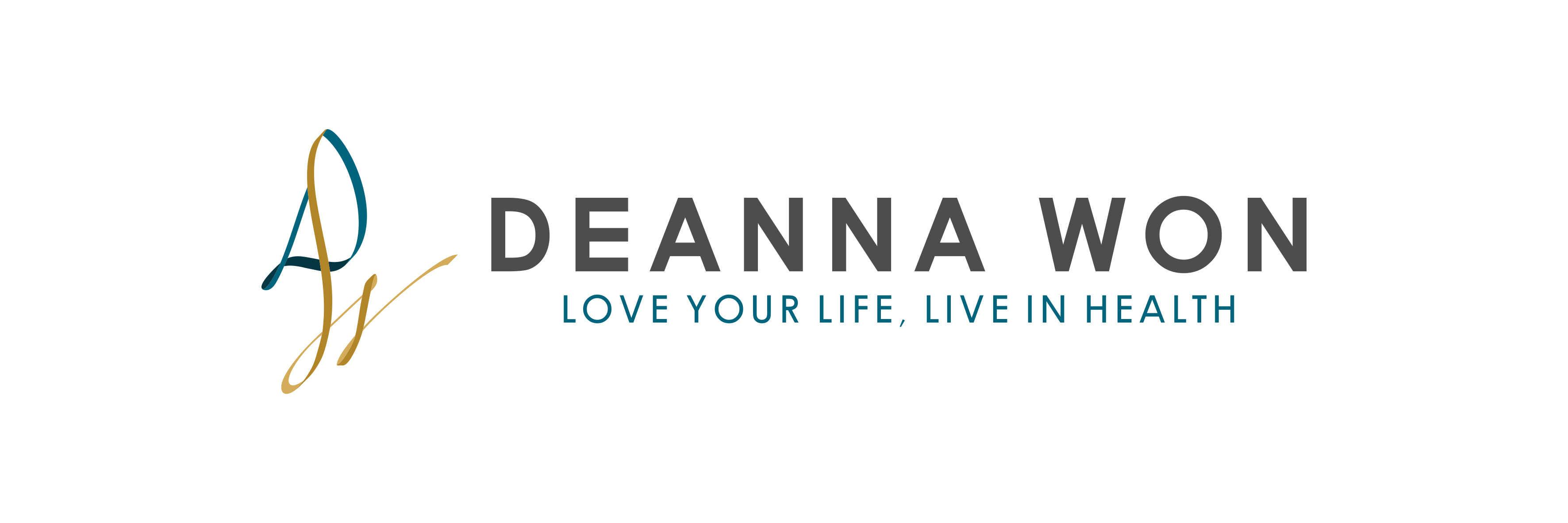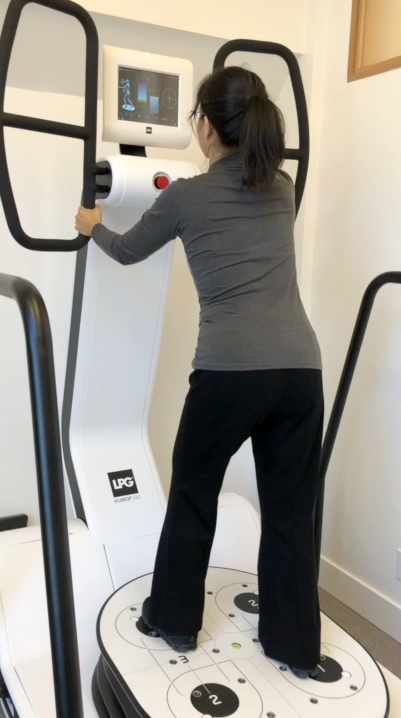Sometimes, life can seemingly grind to a halt when we, or our loved ones undergo a health crisis. If you’ve ever received a serious diagnosis or major surgery, then you understand how long it may take for your body to recover and for your life to return back to “normal.” However, the truth of the matter is that you can’t ever go back. You’re not the same person that you were, and the experience, whether it be through the physical trauma of surgery, or perhaps through the emotional trauma of the diagnoses and treatment, has made indelible marks on your being. There’s definitely a new norm that you may be confronted with post-cancer.
For those who have been diagnosed with cancer, there is a greater prevalence for developing autonomic dysfunction, also known as dysautonomia.[1],[2] This condition involves a dysfunction in the autonomic nervous system (ANS), which regulates all of the involuntary functions in the body. This includes the cardiovascular system, the gastrointestinal system, endocrine (hormonal) system, and the metabolic system. The autonomic nervous system can be divided into two different branches: 1) the sympathetic nervous system, of which most are familiar as the system that is associated with “fight or flight,” and 2) the parasympathetic nervous system, which helps to regulate, largely on an involuntary basis important functions such as heart rate, blood pressure, and digestion.
Therefore, a dysfunction in the ANS can cause a wide-range of symptoms that can be challenging to treat and resolve. What each person experiences with dysautonomia will be unique, but these are some of the more common symptoms. You may experience heart rates and blood pressures that are either too high or too low; you may have breathing, digestive and/or excretion issues. You may find that when you transition from laying, or sitting down, to standing that your blood pressure drops, where you may feel faint with the insufficient blood flow to the brain. This is known as orthostatic hypotension, which is one of the symptoms of dysautonomia.
One of the consequences of my having had ovarian cancer, its subsequent surgery, along with other procedures, was that four to five of my ribs on both sides had become displaced. I was referred to an osteopath to help manipulate these errant ribs back into place. However, following the third session of these adjustments, I literally felt as if a truck had hit me as a general malaise spread throughout my body.
From that moment on, for the next several weeks, I could not swallow without significant pain on the right side of my chest. Even sipping on water, a little bit at a time, created a lot of pain. Upon consulting with another practitioner, I was informed that the rib had actually slightly overlapped the sternum. He told me that it was best not to move the bone back directly, but to, instead, allow it to move back gradually on its own, showing me positions and movements that I could do to facilitate this.
That very night, however, would reveal the full extent of what seemed to be a gentle enough nudge to my rib. I awoke in the middle of the night and felt my heart racing in a way that was completely atypical for me. That would be the beginning of the next two months of episodic spikes in blood pressure, heart rate, and shortness of breath.
I would be fine one moment and then, without warning, and without any obvious physical or emotional trigger or stress, I would first feel short of breath and then, my heart racing. As time went on, I discovered that my blood pressure would also spike. Normally, my blood pressure is typically 90/60. However, one day, when my blood pressure went up to 182/116, and my entire body became overtaken by chills, tremoring, and chattering teeth, I realized that I needed help.
Without warning, every time I ate or drank, that would trigger rapid heart rate, shortness of breath, elevated blood pressure, and now, there was digestive distress, where I would have early satiety and have to stop eating. Eventually, I had to stop eating for two weeks because I could not even sip water without causing my heart rate and blood pressure to spike out of control to the point where it literally felt like I was going to die.
Whenever this happened, my upper abdominal muscles would involuntarily contract, forcing me to double over. If I tried to stand up straight, the pressure in my head and abdomen would be untenable, causing more difficulty with breathing. I could barely walk as my heart would race at the slightest of efforts, further aggravating my breathlessness. Even turning the steering wheel of the car caused me to feel as if I were suffocating.
After being rushed to the emergency room at the hospital two days in a row, I was at a point of desperation because the doctors could not determine the cause for the rapid and extreme fluctuations in my vital signs. They prescribed a beta blocker medication to help bring down my elevated blood pressure and heart rate. However, I never took this medication because something deep within me felt that this was not the solution.
With my organic, raw, living vegan diet and lifestyle, it did not make sense to me that I should have hypertension and tachycardia, or elevated heart rate. There had to be root cause that was triggering these symptoms. It felt like a race against time as I honestly did not know how much more of the pounding and racing my heart could take. My head and abdomen felt on the verge of imploding. The emergency physician referred me to endocrinology, while other physicians referred me to a gastroenterology and nephrology.
At this point, I could barely sleep, due to the incessant pounding. I could also barely eat, with the contraction of the muscles in my upper abdomen along with the resulting elevations in my blood pressure and heart rate, which then led to severe digestive issues.
After several weeks of not being able to sleep, eat, drink, or function, I decided to speak to the medical missionary who had taken care of me when I was in hospice. She reminded me that she had urged me to see a chiropractor for years. While I had consulted with and received treatment from a couple of chiropractors, the adjustments created some of the worst headaches I’ve ever experienced, so I stopped getting these treatments. Towards the end of our conversation, she reminded me of how God had spoken to me so powerfully when I sought guidance to heal from ovarian cancer. This allowed me to heal miraculously out of hospice without undergoing chemotherapy or radiation. She encouraged me to pray, so I got down on my knees and asked God to lead me to the right practitioner.
The next day, I spoke with my assistant, describing to her what I had been experiencing and that I felt like I was struggling for my life. She listened, and then, thoughtfully said to me, “Well, if your rib is impacting some of your nerves, have you considered seeing a neurologist?”
I had actually not considered this as all the doctors were urging me to consult with doctors who specialized in other areas. Could this be God’s answer to my prayer? She then took the initiative to research neurologists in my area and forwarded me the list. Upon scanning this list, one practitioner, Dr. Rachman Chung, jumped out at me above the rest because he was a chiropractic neurologist. Ironically, while I had been avoiding chiropractors for several years, the conversation with the medical missionary came back to me, regarding finding a chiropractor. So, with some trepidation, I called this chiropractic neurologist.
After speaking with him for some time, I felt comfortable that he would have the expertise to perhaps help me. The appointment lasted 2 hours, where he did a thorough neurological examination, that included videonystagmography. This is a goggle that has an integrated infrared camera system that views your eyes in different conditions and situations–for example, from the dark, to being spun, to tracking objects moving across the screen. It provides insight into the vestibular and central balance system. The vestibular system includes the parts of the inner ear and the brain that help to control balance and eye movements.
Saccadometry was also used, which is a measurement of saccades, fast eye movements that are reflexive and which allows us to respond to our environment, quicker than we can actually consciously perceive a stimulus. Based on looking at parameters, such as latency, speed, and accuracy, you can gain insight into the speed of your brain processes, as well as any functional asymmetries between the two sides of the brain or neuronal generator deficits.[3]
Needless to say, I greatly appreciated Dr. Chung’s expertise and the technology that he made use of in helping his patients. After this evaluation, Dr. Chung recommended working on strengthening the parasympathetic nervous system. My treatment included using electrical neuromodulation to treat the left side of my body, stimulating the nerves that connect to the right side of my brain.
 Figure 1 Electrical Neuromodulation
Figure 1 Electrical Neuromodulation
Additionally, he also used photobiomodulation with a 2.5 Watt near-infrared laser to stimulate circulation and healing to the injured areas surrounding the rib that was causing me so issues. This did a great deal to help relieve much of the pain and pressure that I had been feeling in my chest.
I trained on the LPG Huber 360 machine for neuromuscular and vestibular rehabilitation.
Figure 2 Neuromuscular and Vestibular Training on the LPG Huber 360
Figure 3 Neuromuscular and Vestibular Training
I also worked with the Bertec to train the right side of my brain, work on hand-eye coordination, along with balance, which all ties into the vestibular system, feeding into the vagus nerve, which directly impacts heart rate, blood pressure, breathing, and digestion. While this approach may seem peripheral to my immediate symptoms at first glance, after the first treatment, I was very pleased and amazed to see a resolution of my symptoms.
Figure 4 Neurorehabilitation on the Bertec
I could actually sense the difference internally as my resting heart rate dropped to 55 beats per minute, which is 10 beats per minute slower than it has been for several years. The pounding in my upper abdomen, most likely from the abdominal aorta, also calmed down, as did my blood pressure, which miraculously reverted back to 90/60 from my previously dangerous level of 182/116. Most welcome was the return of my appetite especially since I had lost five pounds during the two weeks when I most struggled with my unstable vital signs and inability to consume food and drink.
It was profound to me that, whereas the hospital physicians had advised me to take blood pressure and heart rate medication, with electrical stimulation and infrared laser treatment instead, my symptoms resolved. What if I had chosen to take the medication? Beta blockers are not something that you can abruptly stop taking or you risk getting a heart attack. When I researched out some of the side effects of the mediation, it was disturbing to me that the medication could cause some of the same symptoms that I was experiencing and could additionally cause further complications further down the road.
While it may appear that I was not addressing the heart rate, blood pressure, breathing, and digestive problems directly, going through this form of treatment and rehabilitation confirmed for me that although you may be experiencing a specific problem in a specific organ, say your heart, or your liver, it may not actually be dysfunction with that organ per se; rather, it’s the environment that the organ finds itself in. So, with dysautonomia as a pre-condition from having had cancer, the rib adjustment seemed to to be the “straw that broke the camel’s back,” causing me significant and widespread systemic impact. However, rather than taking the “pill for every ill” mentality in treating the symptoms directly, using a more big-picture, non-specific, albeit systematic and systemic approach that addressed the context of the challenges that my body was facing, proved to be a major game-changer in shifting my body back into its balance.
While we all live busy lives, take time to become aware of the occasional reminders that come to let you know that you’ve been through some significant challenges and traumas in life. Sometimes, it may be easy to minimize just how much you’ve been through because, when you experience a life crisis or other trauma, you have to pull yourself together in order to survive. However, once you get through this, it’s often easy to remain in that same mode, where you downplay particular events because, at times, these may be too much for your mind and emotions to handle.
The consequence of this is that rather than taking the time to recover and reflect after the trauma or event, you choose, instead, to push for the return of your life back to what life was for you prior to the challenge. For example, if you had cancer, and now, you’re considered in remission, you may find yourself attempting to do all the things that you had done before you knew you had cancer. However, this drive to return life back to normal does not honor the journey that you have been on, nor the lessons that you have likely learned as a result of the cancer diagnosis, treatment, and recovery process. It’s important to take stock of where you’ve been, so that you can address where you are.
The most well-adjusted people are those who are able accept the new norms in their lives as a result of their experiences. No matter what you’ve experienced, here are some tips to help you to move gracefully in acceptance of wherever you may be in life:
- Fully honor the journey that you have been on, taking into account those traumatic events and struggles in your life. Be careful not to minimize the significance of these events nor their impact on you.
- Become aware of the occasional reminders that come back periodically to let you know that you are not the same person as you were prior to the diagnosis or treatment. These may not be random occurrences or coincidences. The temptation to rationalize can be strong. There’s a definite and real reason why you may notice certain patterns and recurrences in your life.
- Open your mind to resolving your challenges in ways that may go beyond conventional thought or paradigms. While it may sometimes seem easier to pop a pill for your symptom, take the time to dig a little deeper into your symptoms. This may lead you to specialists, therapists, or others that may fall outside of those with whom you would normally consult.
- Search for the deeper meaning behind your physical symptoms because they often point to a deeper emotional or spiritual issue. For example, if you’re having an issue with your eyes, this may not be coincidental. Ask yourself if there is perhaps something in your life that you may not want to see. Often, finding this meaning can come through journaling, or even through your dreams when you’re asleep.
Rarely does cancer, or any other illness, occur in a vacuum. The events in our lives are like stories that have a beginning, typically some sort of challenge, and hopefully, a desirable resolution. Finding the solution can often occur through connecting the dots of specific events in our lives that may seem isolated and separate when we were experiencing them. However, as we continue on along our journeys, all too often, we learn, that these events are, in fact, connected. Because of this interconnectedness, search for these connections within the midst of the challenges that you face. As you begin to recognize these connections, they may just lead you to the resolution that you’re seeking.
What lessons have you learned from your own journey of healing? Have you had experiences of dysautonomia ? Please share your experiences and questions in the comments below!
Ready to make your health a priority? Contact me here to schedule your consultation.
References:
[1] Stone et al.: Autonomic dysfunction in patients with advanced cancer; prevalence, clinical correlates and challenges in assessment. BMC Palliative Care 2012 11:3.
[2] Lakoski, Susan G., Jones, Lee W., et al : Autonomic Dysfunction in Early Breast Cancer: Incidence, Clinical Importance, and Underlying Mechanisms. Am Heart J. 2015 August ; 170(2): 231–241

